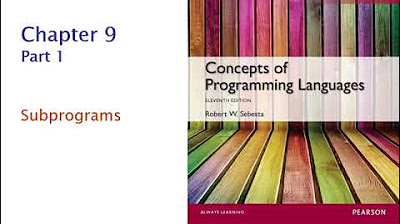DOKUMEN BERBASIS DIGITAL PART 1
Summary
TLDRThis video provides an in-depth discussion on digital-based documents, exploring their definitions, types, functions, and handling procedures. The presenter covers the concept of documents from etymology to modern interpretations, including electronic documents as per Indonesian law. It distinguishes between documents and documentation, outlines the criteria for what constitutes a document, and details the various types, such as personal, commercial, governmental, and historical. The video also delves into the importance of document management, both physical and digital, highlighting procedures for creation, storage, and retrieval to ensure efficiency and security in business and administrative environments.
Takeaways
- 😀 **Definition of Document**: A document is any information recorded in forms like text, images, audio, or video to preserve and communicate information.
- 😀 **Etymology of Document**: The word 'document' comes from the Latin word 'documentum,' meaning a paper or official document.
- 😀 **Types of Documents**: Documents can be categorized into personal (e.g., ID cards), commercial (e.g., business contracts), governmental (e.g., laws), and historical (e.g., the Proclamation text).
- 😀 **Documentation Process**: Documentation involves creating, gathering, processing, and storing documents to generate usable information.
- 😀 **Electronic Documents**: According to the Electronic Information and Transactions Law (2008), electronic documents are information stored digitally that can be displayed or heard via electronic systems.
- 😀 **Difference Between Document and Documentation**: Documents are passive objects of information, whereas documentation is an active process of managing and preparing documents.
- 😀 **Document Function**: Documents serve as evidence, memory for organizations, decision-support tools, and references for historical events.
- 😀 **Document Characteristics**: Documents need to be accessible, updatable, and formatted in ways that clearly communicate necessary information.
- 😀 **Document Handling Procedures**: Handling documents involves several processes like creating, duplicating, using, processing, distributing, and storing both physical and digital documents.
- 😀 **Digital Document Management**: Scanning, conversion, and importing are key processes in handling digital documents, which should be stored efficiently with appropriate indexing and backup systems.
Q & A
What is the definition of a document based on the etymology of the term?
-The term 'document' originates from the English word 'document', which is derived from the Latin word 'documentum', meaning paper or an official record.
How does the Indonesian dictionary (KBBI) define a document?
-According to the Kamus Besar Bahasa Indonesia (KBBI), a document is a written or printed letter that can be used as evidence or a statement.
What is the general definition of a document?
-A document is a record or capture of an event or information to ensure it does not get lost. It can take the form of written notes, images, audio recordings, or films.
What is the role of documentation in relation to a document?
-Documentation refers to the process of gathering, organizing, processing, and storing documents in such a way that they become useful pieces of information for reference and decision-making.
What is the legal definition of electronic documents in Indonesia?
-Electronic documents, as defined in the Indonesian Electronic Information and Transactions Law (UU ITE), are any form of electronic information that can be transmitted, received, or stored in digital, electromagnetic, optical, or similar formats.
What are the key differences between documents and documentation?
-Documents focus on the information itself (whether physical or digital), while documentation involves the active process of collecting, organizing, and utilizing that information.
What are the essential criteria for something to be considered a document?
-For something to be considered a document, it must have physical material, intentionality (purpose), undergo a process to become a document, and be perceived as a document by relevant individuals.
What are the functions of a document in an organization?
-Documents in an organization serve to provide information, act as evidence, preserve organizational memory, support decision-making, and serve as historical references.
What are the main types of documents based on their usage?
-Documents can be classified into personal documents (e.g., ID cards), commercial documents (e.g., contracts), government documents (e.g., laws, regulations), and historical documents (e.g., historical records and important national texts).
How do digital document management systems improve efficiency?
-Digital document management systems enhance efficiency by making documents easier to find, reducing the risk of loss, saving physical space, increasing security, and allowing for easier sharing and backup of information.
Outlines

Esta sección está disponible solo para usuarios con suscripción. Por favor, mejora tu plan para acceder a esta parte.
Mejorar ahoraMindmap

Esta sección está disponible solo para usuarios con suscripción. Por favor, mejora tu plan para acceder a esta parte.
Mejorar ahoraKeywords

Esta sección está disponible solo para usuarios con suscripción. Por favor, mejora tu plan para acceder a esta parte.
Mejorar ahoraHighlights

Esta sección está disponible solo para usuarios con suscripción. Por favor, mejora tu plan para acceder a esta parte.
Mejorar ahoraTranscripts

Esta sección está disponible solo para usuarios con suscripción. Por favor, mejora tu plan para acceder a esta parte.
Mejorar ahora5.0 / 5 (0 votes)






